Woods Bagot has breathed new life into Sydney’s historic Transport House, fashioning it into a dynamic workplace complete with its very own bar.

September 20th, 2023
This is a workplace that gracefully melds heritage with modern sensibilities. Woods Bagot has taken a somewhat unique direction for what might traditionally have simply been called the office by merging the charm of hospitality with it. It’s all about a commitment to fostering innovation and collective purpose.
Jordan Schumacher, lead designer and senior associate at Woods Bagot, explains the guiding principles behind the project: “Diageo celebrates innovation and is always looking to the future. The goal was to rebuild an energy within the workplace that accommodates the hybrid working rhythms and creates deep connection among the teams. The move also brings Diageo close to their customers.”

Diageo defines its work culture as egalitarian, a feature illustrated in design through the absence of dedicated offices or desks – not even for the managing director. To facilitate this distinctive approach and promote collaboration, the new office provides generous communal spaces alongside discrete zones tailored for private meetings and focused work.
Schumacher underscores that the workspace’s centrepiece is the seventh-floor HarBar. Serving as the bustling nucleus of activity and creativity, it embodies Diageo’s spirit, inspiring both employees and clients while prominently showcasing the company’s diverse product portfolio and forward-looking vision.
Related: CBA Headquarters at Darling Quarter

Beyond the HarBar, the seventh floor offers an inviting ambiance, thanks to its expansive original steel-framed windows. These bring in abundant natural light and frame captivating views of Sydney Harbour. Nearby are also co-working areas, wellness facilities, library-inspired working zones and glass-fronted meeting rooms that maintain a visual connection with the central bar area.
“The big thing was around establishing this blended client and staff experience that brings a hospitality feel into the workplace,” says Schumacher. Diageo’s rich product portfolio – boasting over 200 renowned brands such as Johnnie Walker, Guinness, Smirnoff and Bundaberg Rum – plays a pivotal role in shaping the workspace’s aesthetic. A particularly notable element is the ‘Innovation Gallery,’ where more than 30 bottles are displayed under soft lighting, paying homage to Diageo’s heritage and product diversity.
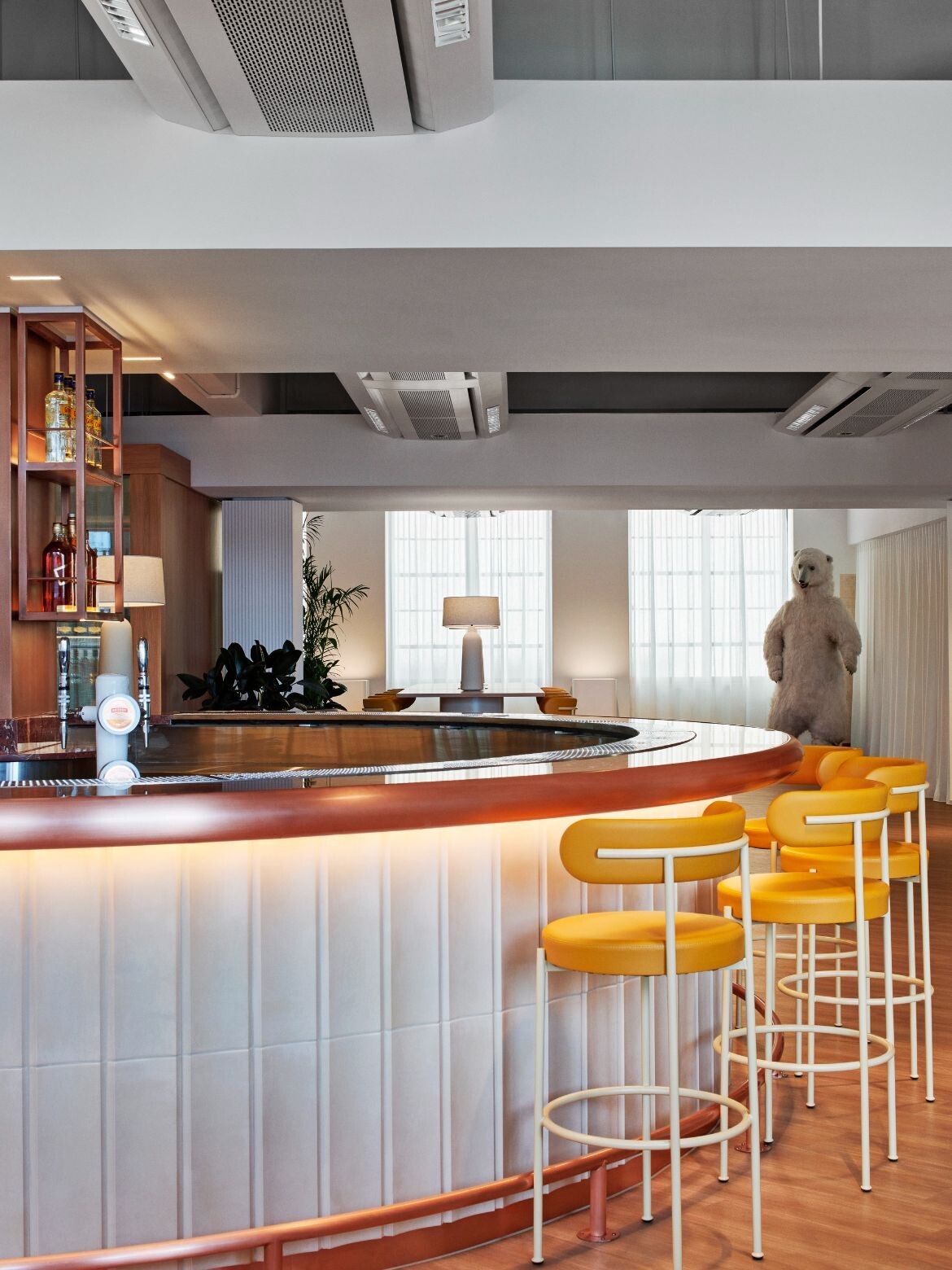
Meanwhile – and rather fittingly – the art of distillation influences the choice of materials used in crafting the HarBar. Schumacher explains: “We were inspired by the materials used to distil liquor such as copper, clay, timber and cloth. They became featured tones in the project. For example, we have a copper bar top, and a lot of accent materiality is done in copper. The cladding to the front of the bar is done in a hand-made clay tile.”
Copper takes centre stage with a striking bar top, while handcrafted clay tiles clad the bar’s front. Downstairs on the sixth floor, the space is exclusively dedicated to Diageo’s 180-member Sydney team, including its Research and Development specialists who have access to a dedicated lab for developing and tasting new beverages. The layout is designed to encourage team cohesion, with brand teams situated together and seating allocations managed through a desk booking system.

Kobie Taylor, Diageo’s human resources director, underscores the importance of the new workspace: “Choice, flexibility and collaboration are critical to our team. Having a space that caters for different working patterns, includes both individual and team working areas, and a strong representation of what our culture and our brands stand for are extremely important.” The project also signifies a return to the company’s roots in Circular Quay and The Rocks.
Transport House’s heritage as an Art Deco gem completed in the late 1930s is a feature Schumacher is keen to emphasise as a central aspect of the design. Woods Bagot has ensured that this heritage is not merely preserved but embraced, infusing the workspace with a character and distinction setting it apart from conventional commercial spaces. The resulting design is a marriage of history, collaborative hospitality and modern functionality.
Woods Bagot
woodsbagot.com
Photography
Nicole England


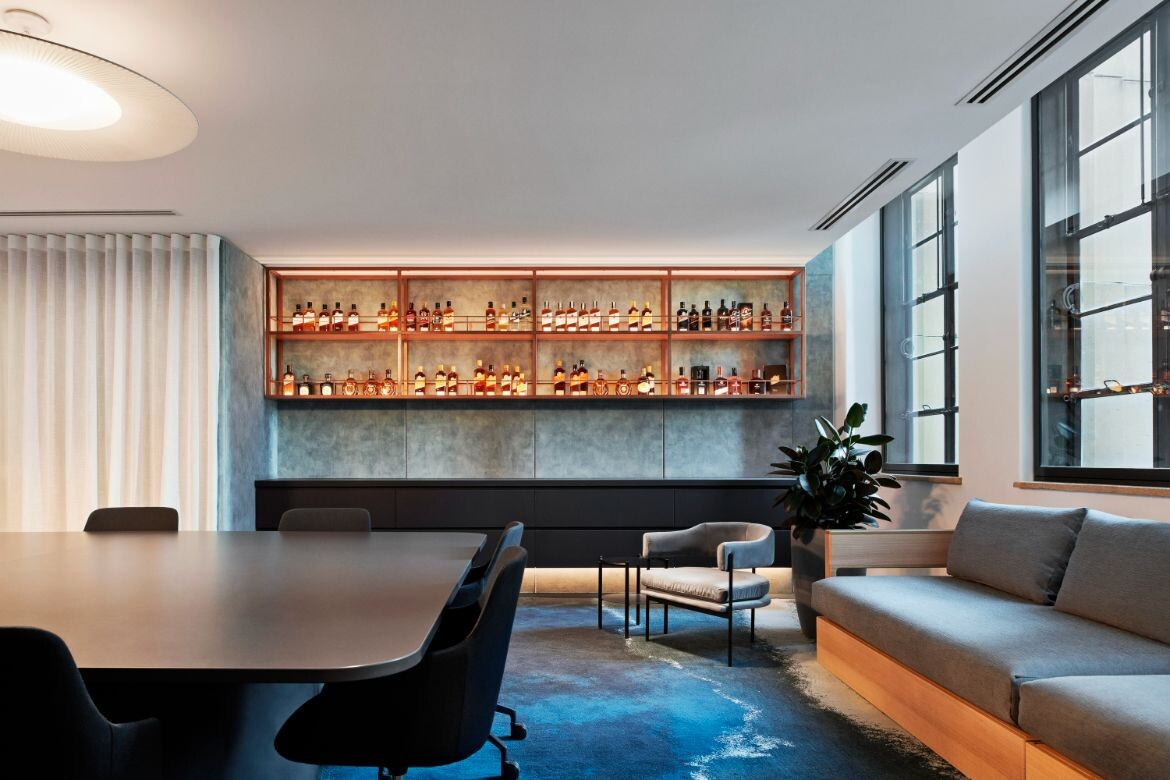
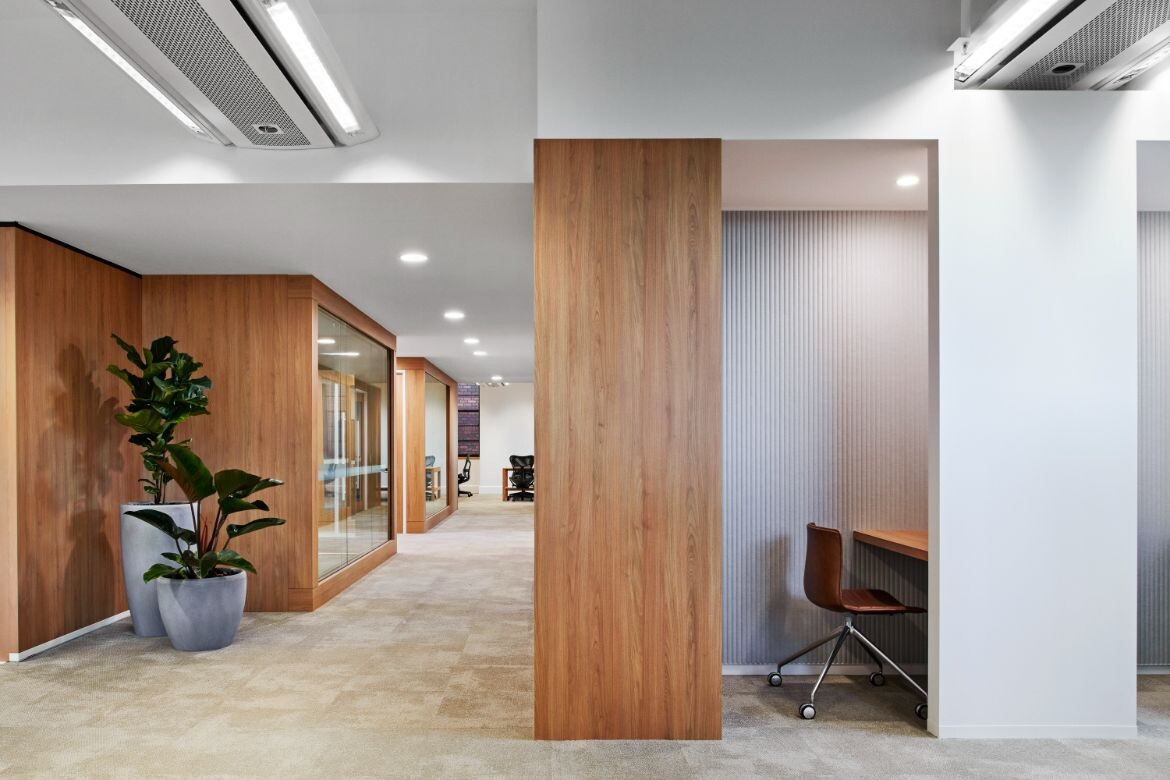

We think you might also like this story on DesignOffice and The Commons.
INDESIGN is on instagram
Follow @indesignlive
A searchable and comprehensive guide for specifying leading products and their suppliers
Keep up to date with the latest and greatest from our industry BFF's!

The undeniable thread connecting Herman Miller and Knoll’s design legacies across the decades now finds its profound physical embodiment at MillerKnoll’s new Design Yard Archives.

A curated exhibition in Frederiksstaden captures the spirit of Australian design
The new range features slabs with warm, earthy palettes that lend a sense of organic luxury to every space.

London-based design duo Raw Edges have joined forces with Established & Sons and Tongue & Groove to introduce Wall to Wall – a hand-stained, “living collection” that transforms parquet flooring into a canvas of colour, pattern, and possibility.

Across four decades, Leone Lorrimer LFRAIA GAICD reshaped Australian architecture through strategic vision, global influence and fearless leadership.

‘Come Together’ takes a global view of multigenerational design, an increasingly popular phenomenon with some especially notable examples in Australia.
The internet never sleeps! Here's the stuff you might have missed
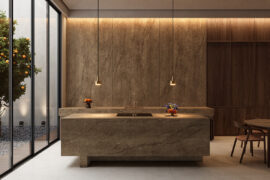
Cosentino introduces Éclos®, a new mineral surface brand featuring zero crystalline silica, high recycled content and Inlayr® technology that brings 3D layered realism to design.
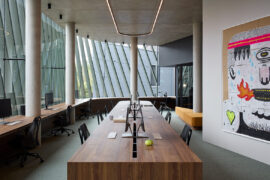
Smart Design Studio and Those Architects combine landmark and workplace in Bundarra, a Surry Hills gateway blending old and new.